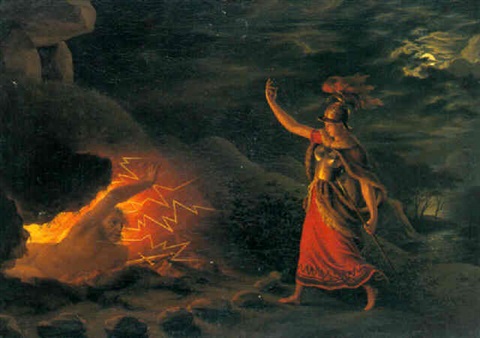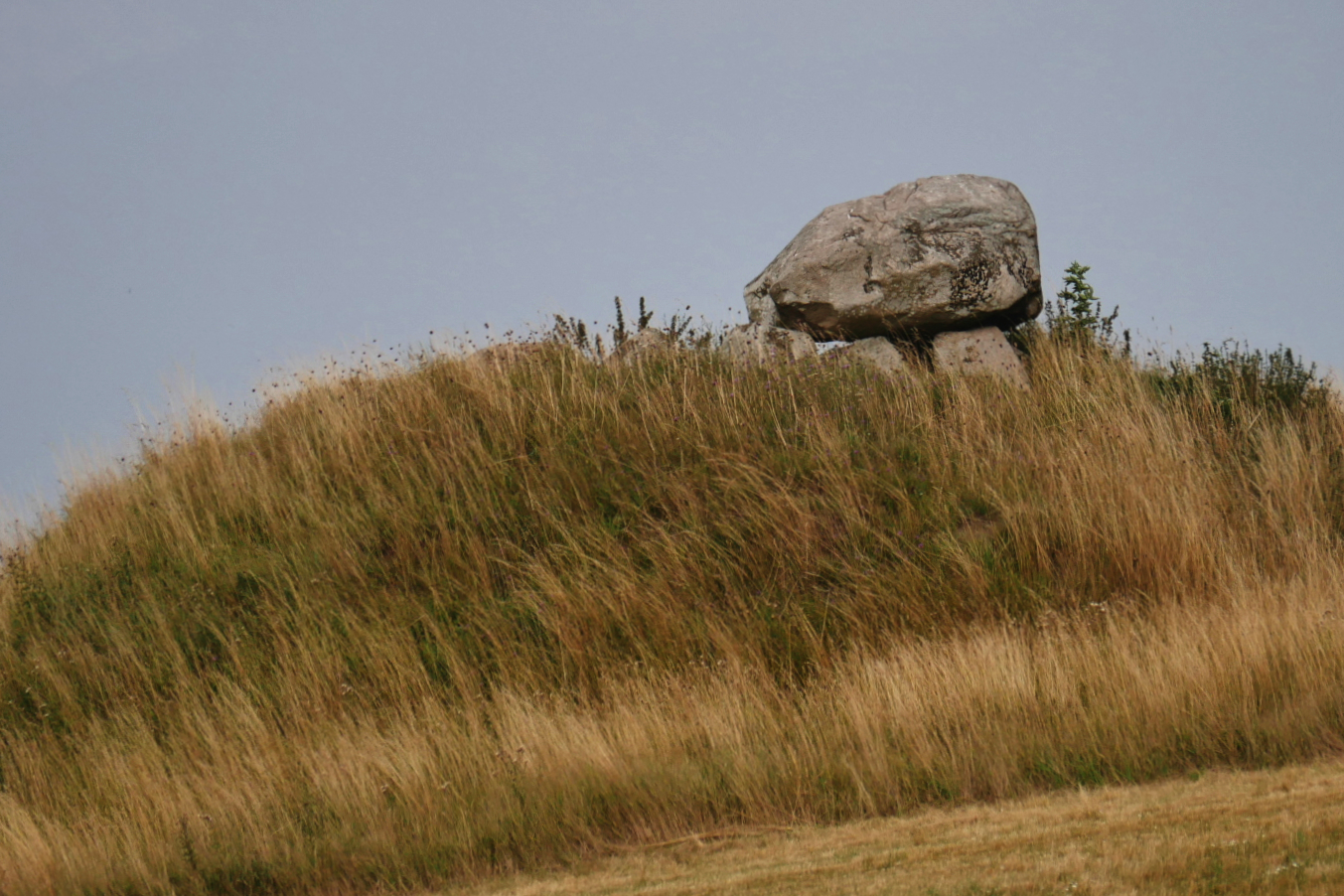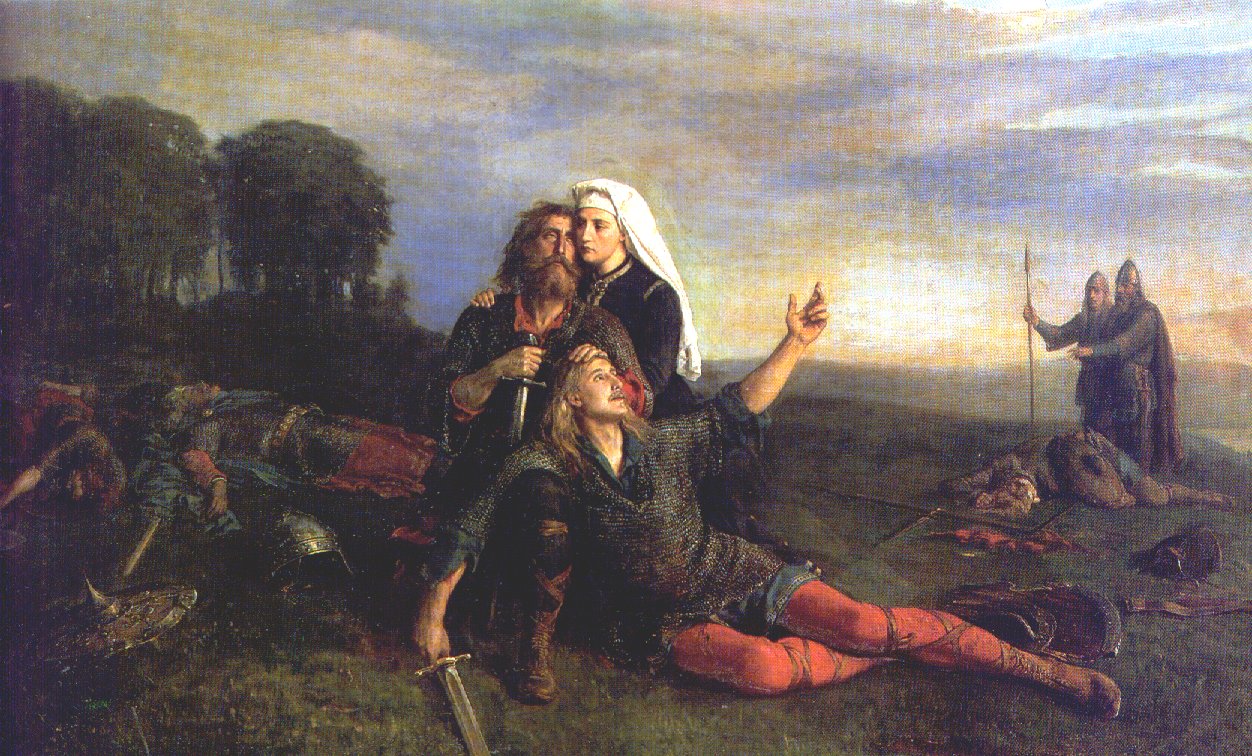|
Munarvágr
Munarvágr was a location on the southern shore of Samsø, which is mentioned in the legendary sagas '' Hervarar saga'' and ''Ragnar Lodbrok's saga''. In the ''Hervarar saga'', it is where Hjalmar and Orvar-Odd fought Angantyr and his brothers, the sons of Arngrim. Later, Angantyr's daughter Hervor steps ashore in her quest to claim the enchanted sword Tyrfing from the barrow-wight Barrow-wights are wraith-like creatures in J. R. R. Tolkien's world of Middle-earth. In ''The Lord of the Rings'', the four hobbits are trapped by a barrow-wight, and are lucky to escape with their lives; but they gain ancient swords of Western ... of her own father. In an epilogue to the ''Ragnar Lodbrok's saga'', some men find a wooden idol, 40 ells high, which chants to them that it had been raised by the sons of Ragnar Lodbrok. References Locations in Norse mythology Saga locations Tyrfing cycle Samsø {{CentralDK-stub ... [...More Info...] [...Related Items...] OR: [Wikipedia] [Google] [Baidu] |
Hervor
Hervör is the name shared by two female characters in the Tyrfing Cycle, presented in '' The Saga of Hervör and Heidrek'' with parts found in the ''Poetic Edda''. The first, the viking Hervör, challenged her father Angantýr's ghost in his gravemound for his cursed sword Tyrfing. She had a son, Heidrek, father of the other Hervör. The second Hervör was a commander killed in battle with her brother. The two are thought by some academics to be the same character, duplicated.http://vsnrweb-publications.org.uk/The%20Saga%20Of%20King%20Heidrek%20The%20Wise.pdf Hervör, daughter of Angantyr Childhood Hervör was born after her father Angantyr died during a duel against the Swedish hero Hjalmar. His mother was Svafa, who was daughter of a Jarl Bjarmar. Rather than take on sewing or be raised as a bond-maid like other girls, Hervör proved to be as strong as the boys and learned archery, swordsmanship, and horse riding. She dressed like a man, fought, killed and pillaged under ... [...More Info...] [...Related Items...] OR: [Wikipedia] [Google] [Baidu] |
Hjalmar
Hjalmar () and Ingeborg () were a legendary Swedish duo. The male protagonist Hjalmar and his duel for Ingeborg figures in the '' Hervarar saga'' and in '' Orvar-Odd's saga'', as well as in ''Gesta Danorum'', ''Lay of Hyndla'' and a number of Faroese ballads. Hjalmar never lost a battle until meeting a berserker wielding the cursed sword Tyrfing. A tale of two heroes Hjalmar was one of the mythical Swedish king Yngvi's housecarls at Uppsala. He and princess Ingeborg were in love, but the king said no to his requests for marriage, since he hoped for a suitor with a better pedigree. Hjalmar's reputation as a courageous and valiant warrior was great and it reached the most remote parts of Norway, where the Norwegian hero Orvar-Odd felt a desire to test his fighting skills with Hjalmar. Thus Orvar-Odd sailed to Sweden with five ships and met Hjalmar who had fifteen ships. Hjalmar could not accept such an uneven balance of strength and sent away ten of his own ships so that the force ... [...More Info...] [...Related Items...] OR: [Wikipedia] [Google] [Baidu] |
Samsø
Samsø (Anglicized: "Samso" or "Samsoe") is a Denmark, Danish island in the Kattegat off the Jutland Peninsula. Samsø is located in Samsø municipality. The community has 3,724 inhabitants (2017) (January 2010:4,010) called ''Samsings'' and is 114 km² in area. Due to its central location, the island was used during the Viking, Viking Age as a meeting place. The etymology of the island's name is unknown. In 1997, Samsø won a government competition to become a model renewable energy community. Now 100% of its electricity comes from wind power and biomass. Etymology The name Samsø is of unknown origin. The name is known from 1075 as ''Samse''. This word is a Simplex (Etymology), simplex and the addition of -, Danish language, Danish for 'island', is thus a later compounding, known in toponymy as ''epexegesis''. Geography Ballen's beach and village are popular with visitors. The island is served by a bus service which runs around the island, including the two ferry te ... [...More Info...] [...Related Items...] OR: [Wikipedia] [Google] [Baidu] |
Legendary Saga
A legendary saga or ''fornaldarsaga'' (literally, "story/history of the ancient era") is a Norse saga that, unlike the Icelanders' sagas, takes place before the settlement of Iceland.The article ''Fornaldarsagor'' in ''Nationalencyklopedin'' (1991) There are some exceptions, such as '' Yngvars saga víðförla'', which takes place in the 11th century. The sagas were probably all written in Iceland, from about the middle of the 13th century to about 1400, although it is possible that some may be of a later date,Einar Ól. Sveinsson, "Fornaldarsögur", in ''Kulturhistorisk leksikon for nordisk middelalder fra vikingtid til reformasjonstid, bd. 4'' (Copenhagen, 1959) such as ''Hrólfs saga kraka''. Description of the sagas In terms of form, ''fornaldarsögur'' are similar to various other saga-genres, but tend towards fairly linear, episodic narratives. Like sagas in other genres, many quote verse, but in the ''fornaldarsögur'' that verse is almost invariably in the metre of Eddaic v ... [...More Info...] [...Related Items...] OR: [Wikipedia] [Google] [Baidu] |
Ragnar Lodbrok
according to legends, was a Viking hero and a Danish and Swedish king.Gutenberg Project version published 13 December 2017. He is known from of the , Icelandic s, and near-contemporary chronicles. According to traditional literature, Ragnar distinguished himself by conducting many raids against the an ... [...More Info...] [...Related Items...] OR: [Wikipedia] [Google] [Baidu] |
Angantyr
Angantyr was the name of three male characters from the same line in Norse mythology, and who appear in '' Hervarar saga'', ''Gesta Danorum'', and Faroese ballads. The last generation named Angantyr also appears to be mentioned as ''Incgentheow'' in ''Widsith'', line 115, together with his father Heiðrekr (''Heathoric''), half-brother Hlöð (''Hlith'') and Hlöð's mother Sifka (''Sifeca''). Angantyr the Berserker Angantyr's father Arngrim had given him the magic sword Tyrfing, which cut through anything as if through cloth, and which killed a man every time it was unsheathed. He was the tallest of the twelve sons of the berserker Arngrim, and he and his eleven brothers spread fear and destruction through the North. One Yule, they were back home on Bolmsö when the next eldest son Hjörvard, swore that he would win Ingeborg, the daughter of Yngve, the king of Sweden. The twelve brothers departed for Uppsala and Hjorvard proposed to Ingeborg. However then Hjalmar, one ... [...More Info...] [...Related Items...] OR: [Wikipedia] [Google] [Baidu] |
Arngrim
Arngrim was a berserker, who features in Hervarar saga, Gesta Danorum, Lay of Hyndla, a number of Faroese ballads and Orvar-Odd's saga in Norse mythology.Henrikson, Alf. (1998). ''Den stora mytologiska uppslagsboken''. Hervarar saga According to versions ''H'' and ''U'', Arngrim went pillaging to Gardariki and met its king Svafrlami, who was in possession of Tyrfing at the moment. Tyrfing cut through Arngrim's shield and down into the soil, whereupon Arngrim cut off Svafrlami's hand, grabbed the sword and slew him with his own weapon. Then Arngrim captured Svafrlami's daughter Eyfura and forced her to marry him. Version ''R'', however relates that Arngrim became ''Sigrlami's'' war-chief and won many battles and conquered land and subjects for the old king. In recompense, Arngrim was given a high position in the realm, Eyfura and Tyrfing. In all versions of the saga, Arngrim returned to Bolmsö with Eyfura (although versions ''H'' and ''U'' say that it was the island ''Bol ... [...More Info...] [...Related Items...] OR: [Wikipedia] [Google] [Baidu] |
Tyrfing
Tyrfing, Tirfing or Tyrving (the name is of uncertain origin, possibly connected to the Terwingi) was a magic sword in Norse mythology, which features in the Tyrfing Cycle, which includes a poem from the ''Poetic Edda'' called ''Hervararkviða'', and the Hervarar saga. The name is also used in the saga to denote the Goths. The form ''Tervingi'' was actually recorded by Roman sources in the 4th century. Svafrlami was the king of Gardariki, and Odin's grandson. He managed to trap the dwarfs Dvalinn and Durinn when they had left the rock where they dwelt. Then he forced them to forge a sword with a golden hilt that would never miss a stroke, would never rust and would cut through stone and iron as easily as through clothes. The dwarfs made the sword, and it shone and gleamed like fire. However, in revenge they cursed it so that it would kill a man every time it was drawn and that it would be the cause of three great evils. They finally cursed it so that it would also kill Sv ... [...More Info...] [...Related Items...] OR: [Wikipedia] [Google] [Baidu] |
Barrow-wight
Barrow-wights are wraith-like creatures in J. R. R. Tolkien's world of Middle-earth. In ''The Lord of the Rings'', the four hobbits are trapped by a barrow-wight, and are lucky to escape with their lives; but they gain ancient swords of Westernesse for their quest. Tolkien derived the idea of barrow-wights from Norse mythology, where heroes of several Sagas battle undead beings known as draugrs. Scholars have noted a resemblance, too, between the breaking of the barrow-wight's spell and the final battle in '' Beowulf'', where the dragon's barrow is entered and the treasure released from its spell. Barrow-wights do not appear in Peter Jackson's film trilogy, but they do feature in computer games based on Tolkien's Middle-earth. Origins A barrow is a burial mound, such as was used in Neolithic times. A ''wight'', from Old English: ''wiht'', is a person or other sentient being. There are tales of wights, called ''vǣttr'' or '' draugr'', undead grave-spirits with bodie ... [...More Info...] [...Related Items...] OR: [Wikipedia] [Google] [Baidu] |
Locations In Norse Mythology
In geography, location or place are used to denote a region (point, line, or area) on Earth's surface or elsewhere. The term ''location'' generally implies a higher degree of certainty than ''place'', the latter often indicating an entity with an ambiguous boundary, relying more on human or social attributes of place identity and sense of place than on geometry. Types Locality A locality, settlement, or populated place is likely to have a well-defined name but a boundary that is not well defined varies by context. London, for instance, has a legal boundary, but this is unlikely to completely match with general usage. An area within a town, such as Covent Garden in London, also almost always has some ambiguity as to its extent. In geography, location is considered to be more precise than "place". Relative location A relative location, or situation, is described as a displacement from another site. An example is "3 miles northwest of Seattle". Absolute location An absolute locatio ... [...More Info...] [...Related Items...] OR: [Wikipedia] [Google] [Baidu] |




